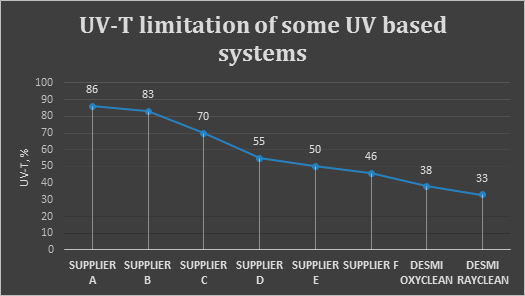Shipowners Beware: Ballast Water Treatment in Freshwater
Ballast water treatment system manufacturer Evoqua Water Technologies recently announced that its electro-chlorination system has gained U.S. Coast Guard alternative management system (AMS) approval for use in fresh, brackish and sea water. It’s one of a select few systems out of nearly 50 IMO type approved systems globally to have its fresh water performance tested to a recognised standard.
Yet, many ports and waterways around the world are fully fresh water, and many shipowners have already bought ballast water treatment systems that are unproven in such environments. In general, fresh water organisms of related species tend to be smaller in size in fresh water, says Lars Nupnau, director of global business development (marine) at Evoqua. This means they may bypass filter systems.
“The SeaCURE BWMS was tested in fresh water at the test facility of Great Ships Initiative in Lake Superior, US. The system is to date the only commercially available system that has passed land-based testing under the challenging conditions the natural water present there. Beside abundant biological life the water is rich in tannins and other humic acids that give the water a dark reddish color. These substances, present in water, reduce transmissivity of UV-light in water and hence make UV-ballast water treatment extremely challenging,” says Nupnau.
UV transmissivity (UV-T) is a measure of the capability of UV light to penetrate into the water. When the UV-T is high, close to 100 percent, it means the water is very clear and that UV light can penetrate deep into the water. On the other hand, when the UV-T is low (below 50 percent) it means the water is very un-clear and that UV light only can penetrate a limited distance into the water.
UV system manufacturers don’t see fresh water as too much of a challenge. “Most disinfection technologies, including UV, work well in fresh water,” says Tom Mackey spokesman for Hyde Marine, manufacturer of a UV ballast water treatment system. “One problem is the lack of salt to provide a source of chlorine for electrolysis systems, requiring that brine be carried aboard if the system is to be used. Another is the potential presence of ice and the possibility of extreme hot and cold water temperatures.” Hyde’s Guardian Gold filter system is one that has been tested in fresh water with large amounts of organic matter and sediment.
The IMO does not require testing in fresh water although the U.S. Coast Guard does. Neither specifically mention UV-T.
Rasmus Folsø, CEO of DESMI Ocean Guard, which manufactures a UV and an electro-chlorination system, says that shipowers are surprised when he points out the issues associated with UV-T to them. Many test facilities around the world have very clear water that they use for the test, he says, so shipowners may have purchased a system that could be challenged by low UV-T.
Just as IMO is now expecting type approval certificates to indicate the salinity range that treatment systems have been tested for, Folsø believes the U.S. Coast Guard will expect UV-T ranges to be documented in the future.
DESMI has documented UV-T for various harbors to illustrate the risks.
Port UV-T
Shanghai, China* 49
Vera Cruz, Mexico 94
Houston, US 74
New Orleans, US 54
Shanghai, China* 55
Hong Kong, China 80
Antwerp, Belgium 66
Rotterdam, Netherlands 93
*Measured on two different days and two different locations in Shanghai port.
Few system manufacturers have stated what their limitations are, but DESMI has graphed those that have.

From this simple example it becomes clear that whereas the actual UV-T values in real operation are often in the range of 100 – 50 percent and lower, in some extreme cases, several type approved systems on the market will not be able to cope with this, says Folsø. Whereas DESMI Ocean Guard’s RayClean system can treat water with UV-T anywhere between 100 – 33 percent, other systems are limited to for example UV-T ranges of only 100 – 86 percent.
Shipowners should demand suppliers of treatment systems to clearly document what the limitations of their systems are, says Folsø. If this information is not available or cannot be disclosed, the shipowner should be aware of, and carefully consider, the risk associated with installing such a system.
Many now believe the IMO ballast water management convention will enter into force next year despite this issue, but there are more issues for shipowners to be wary of. Shortly after their announcement of type approval in fresh water, Evoqua announced that the Federal Maritime and Hydrographic Agency of Germany, which previously granted type approval for their system, has now certified it to operate in volumes from 500-4,000m3/hr. System efficacy at different operating volumes can be impacted by UV-T and is something else for shipowners to consider.
The opinions expressed herein are the author's and not necessarily those of The Maritime Executive.
